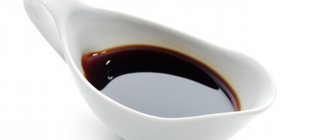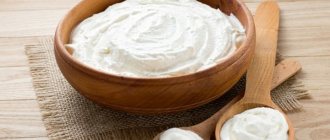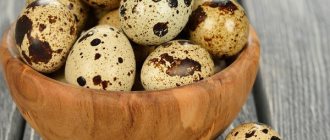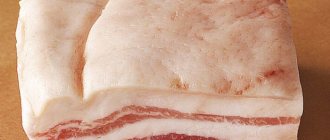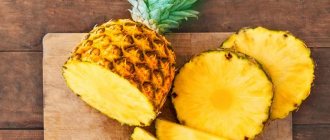09/04/2018 Category: Nutrition for a nursing mother Author: Irina Poddubna
Nothing lifts your spirits on a dull day more than a plate of aromatic, rich borscht or thick cabbage soup with wild mushrooms. However, a nursing mother is often told that such high-calorie dishes are contraindicated for her because they can cause allergies in the baby. We will try to destroy stereotypes and prove that during breastfeeding you can eat as tasty as at any other period of life.
- The whole truth about borscht
Types of borschtPhoto gallery: types of borscht
- Table: borscht ingredients and their effect on the body
- Table: calorie content of different types of borscht
- Types of cabbage soup
Table: the most famous varieties of Russian cabbage soup
- Table: calorie content of different types of cabbage soup
- A few words about the broth
Breastfeeding diet: myths and reality
The idea that motherhood is a feat sits surprisingly firmly in our subconscious. It is believed that a real mother should put the interests of the child above her own. And a large number of restrictions must be observed during pregnancy and breastfeeding.
Considering motherhood as a feat is an old Soviet tradition
One of the main dietary restrictions for pregnant women and nursing mothers concerns dangerous allergenic foods. It is believed that in this way the risk of developing food allergies in the baby is minimized. But experts from the Boston Cancer Research Institute (USA) recently found that the situation is the opposite.
Scientists came to this conclusion after conducting a study that examined the medical data of 8205 children. 308 children had food allergies. Of these, 140 were allergic to peanuts (the legume family) or to “nuts” such as almonds, brazil, cashews, pistachios and hazelnuts (a real nut). The findings showed that children whose mothers ate peanuts or other nuts five times a week or more had the lowest risk of developing allergies. Study leader Dr. Lindsay Fraser of Dana-Farber Children's Cancer Center in Boston said the work supports the hypothesis that early exposure to an allergen increases the likelihood of developing tolerance to it, thereby reducing the risk of food allergies in children. nutrition. Dr Ruchya Gupta, from Northwestern University in Chicago, said the study showed that claims that women should limit their diet during pregnancy are unfounded.
Anastasia Mikhalchenko
https://zdorovo.ua
It is the presence of highly allergenic ingredients, in particular tomato, carrots and beets, that those who speak about the inadmissibility of consuming borscht both during pregnancy and during breastfeeding argue for their position. But let’s look at the list of foods prohibited during lactation, which is not that long. Essentially there are only two dietary restrictions:
- absolute. A nursing mother should definitely avoid foods containing toxic substances and chemical additives (nitrates, antibiotics, preservatives, dyes, flavor enhancers, etc.). Fast food, chips, vegetables and fruits purchased out of season are prohibited;
- relative. You should not eat foods that are not typical for the nursing mother’s place of residence and her diet. It is better to conduct culinary experiments after the baby switches to independent feeding.
Chemical additives are really dangerous for a nursing mother and her baby
Both borscht and cabbage soup are traditional dishes of Slavic cuisine. It’s hard to imagine that our great-great-grandmothers would create a special menu for themselves during breastfeeding.
Pour some vigorous cabbage soup, fatter and thicker. I Koschei became skinny from overseas vegetables!
L.A. Filatov
The tale of Fedot the Sagittarius, a daring fellow
A quote about cabbage soup from a famous fairy tale, written in the 80s of the last century by a talented Soviet actor and poet, very subtly reflects the Russian person’s idea of tasty and healthy food.
A plate of thick cabbage soup is a complete meal
Rumors about the dangers of borscht and cabbage soup during breastfeeding are, at least, somewhat exaggerated. To make sure of this, let’s study the contents of these dishes more closely.
Baby's digestion
The digestive system of a newborn is not adapted to heavy loads. The comfort of the baby depends on the composition of mother's milk. When breastfeeding, a woman should take a responsible approach to creating her own menu. At first, it is better to exclude controversial products.
Having eaten even a little sauerkraut, the mother runs the risk of causing increased flatulence and colic in the baby. The first month is not the best time for experiments. But every day the baby’s body is getting stronger. There is no point in abstaining from eating your favorite food throughout the entire period of guards. What is the optimal time frame for innovation? When can you try the desired pickled vegetable again?
The whole truth about borscht
Two peoples have long disputed their rights to this dish: Russian and Ukrainian. But borscht is also considered a national treasure in Belarus, Romania, Poland, Moldova and even Lithuania.
The history of the dish goes back at least six centuries. It was probably originally a simple hogweed stew, hence the surviving name. Over time, beet kvass was used as the base of the soup, to which seasonal vegetables were added and steamed in the oven.
Two Russian monarchs were big fans of borscht: Catherine II the Great and Alexander II the Liberator.
Of course, the borscht of the monarch and the stew of the common people had little in common with each other. Perhaps it is precisely because of its versatility that this dish has maintained its popularity for so long.
Types of borscht
Ukrainians say that every housewife has her own recipe for borscht, but in all the variety of variations, several main varieties of the dish can be distinguished.
The color of borscht is:
- red (thanks to tomatoes and beets);
- green (sorrel is placed instead of cabbage, and tomatoes and beets may or may not be added).
Depending on the base, borscht can be:
- meat (and absolutely any meat or poultry can be used for the broth);
- fish (perhaps the least common option);
- lean (with mushrooms and beans, kvass or kefir).
Meat and fish borscht are served hot; lean borscht is good cold.
Photo gallery: types of borscht
Red borscht is a dish prepared according to a classic recipe
Instead of cabbage, put sorrel in green borscht
Borscht can also be cooked with fish
Lenten borscht with beans is often eaten cold
Composition and beneficial properties of borscht
The properties of a product are determined by its composition. Borscht may contain various components, so we will try to evaluate the dish by “breaking it down” into its individual components.
Table: borscht ingredients and their effect on the body
| Ingredient name | Beneficial features | Possible harm |
| Cabbage (boiled) |
| Practically absent. |
| Beetroot (boiled) |
|
|
| Carrots (boiled) |
| May cause allergies. |
| Boiled potatoes) |
|
|
| Onion (sautéed) |
| May cause allergies. |
| Garlic |
|
|
| Tomatoes (tomato paste) |
|
|
| Beans (boiled) |
| It is only dangerous if undercooked (contains toxins). |
| White mushrooms (boiled) |
|
|
| Meat (meat broth) | Source of protein and essential amino acids. |
|
| Salo |
|
|
| Fish (fish broth) |
|
|
| Sour cream |
|
|
| Greens (fresh) |
| Parsley reduces lactation. |
| Sorrel |
|
|
Almost all potential dangers to the body of a nursing mother that borscht poses can be easily resolved if you use only fresh and high-quality products when preparing the dish. But borscht has a huge number of beneficial properties. And this list can be supplemented with another important point: the pleasure received from food.
Photo gallery: main ingredients of borscht
Cabbage gives acid
Meat can be anything
Ukrainian borscht is impossible without lard
One of the most useful components in borscht is carrots.
Beetroot gives borscht its red color.
Red borscht always contains tomatoes
Onions and garlic strengthen the immune system
Calorie content of borscht
The calorie content of borscht, of course, depends on the composition of the dish, but some average data can still be given.
Table: calorie content of different types of borscht
| Type of borscht | Amount of kcal in a small portion (250 g) |
| Red with chicken | 85–120 |
| Red with pork | 160–250 |
| Green with pork | 300–450 |
| Red with beef | 180 |
| Green with beef | 190–220 |
| Fish | 100–150 |
| Lenten red | 50–75 |
| Lenten green | 90 |
| With sour cream (1 spoon) | + 35–90 |
| Ukrainian with pampushki with garlic sauce | 585 |
The higher calorie content of green borscht compared to red borscht is explained by the addition of boiled eggs to the dish.
An egg adds calories to green borscht
However, you can reduce the calorie content of a dish without compromising its taste. For example, for this purpose you should:
- use boneless meat;
- sauté vegetables in a small amount of oil;
- put less potatoes;
- season the dish with low-fat sour cream;
- serve with black bread, and not with rich donuts made with wheat flour.
Before turning borscht into a dietary dish, you should remember that a nursing mother needs calories, because... lactation is an energy-consuming process. Breast milk production takes an additional 500 calories from a woman every day, so her daily calorie intake is higher.
Breastfeeding is an energy-intensive process
A nursing mother needs at least 2700 kcal per day, and if she leads an active lifestyle, then even more. If you consider that a plate of the richest borscht with garlic dumplings is almost 600 kcal and does not even reach a quarter of the daily requirement, then you don’t have to worry about eating something extra.
To reduce the load on the liver during lactation, you can give preference to borscht with beef or poultry.
Thus, borscht is a unique dish that, thanks to a combination of plant and animal products, contains everything that the human body needs: vitamins, minerals, carbohydrates (fiber), fats and proteins. This dish energizes, optimizes digestion, strengthens the immune system and simply improves your mood.
The whole truth about cabbage soup
Shchi (also obsolete shti) is a close relative of borscht, perhaps even more ancient. But if several Slavic peoples claim their rights to borscht at once, then no one disputes that it belongs to the Russian national cuisine.
Shchi is a traditional dish of Russian cuisine.
Initially, this version of vegetable stew was cooked exclusively in water, in some cases in mushroom broth, but later they began to add meat or fish to it.
Connoisseurs of cabbage soup among the Russian emperors were: Peter I the Great, Alexander III and Nicholas II. And the famous phrase “cabbage soup and porridge is our food” is attributed to Alexander Suvorov.
Cabbage soup occupied a special place on the Russian table. Thick and rich, they simultaneously served as both the first and second courses.
Types of cabbage soup
In terms of variety of cooking recipes, cabbage soup can compete with borscht. The main feature of this dish is the presence of cabbage in it, and very boiled cabbage. Otherwise, a variety of options are possible.
Cabbage soup is:
- gray, white and green (green cabbage leaves are added to the first, light cabbage leaves to the second, spinach, sorrel or young nettle to the third);
- lean, meat and fish;
- sour, fresh and from seedlings (in the first, sauerkraut is added, in the second - regular cabbage, in the third - young cabbage seedlings are chopped).
In addition, there are special branded cabbage soup with its own “zest”.
Table: the most famous varieties of Russian cabbage soup
| Name of dish | Cooking feature |
| The cabbage soup is lazy | All vegetables are cut into large slices, sauteed briefly, and then boiled over low heat (without boiling). |
| Cabbage soup daily | Boil without potatoes, and when ready, stand in the cold for 24 hours. |
| Farm cabbage soup | Lenten cabbage soup made from fresh cabbage and vegetables, to which is added sago, a grain made from starch. |
| Summer cabbage soup | With fresh cabbage minced. |
| Don cabbage soup | In fish broth, with fresh cabbage. The dish is served with sour cream and pies. |
| Turnip cabbage soup | In the soup, turnips or radishes are used instead of cabbage. |
| Suvorov cabbage soup | The peculiarity is the absence of potatoes and the presence of pearl barley. |
| Boyar cabbage soup | A rich dish with beef brisket, ham, pork and goose meat. Sauerkraut is used. |
| Prefabricated cabbage soup | Fatty soup with smoked meats on the bone, ham, meat and poultry. Sauerkraut is used. The dish is served steamed in pots with sour cream and herbs. |
| Cabbage soup in bourgeois style | Sauerkraut is stewed separately and rubbed through a sieve before adding to the broth. Sausages and flour are also added for thickness. |
| Nikolaev cabbage soup | Lenten cabbage soup with sauerkraut and vegetables. |
| Royal cabbage soup | With smoked pork ribs, beef and tomatoes. |
This list is far from complete, but it gives a general idea of how much different types of cabbage soup can differ from each other.
Composition and beneficial properties of cabbage soup
In terms of their composition, cabbage soup has much in common with borscht, so there is no point in repeating the beneficial properties of most of the ingredients. However, it is worth mentioning separately sauerkraut, which is most often used in this dish.
Sour cabbage is one of the few products in which the beneficial properties of a fresh vegetable are not lost, but multiplied. For example, it has the following advantages over fresh:
- better absorbed;
- contains more vitamin C;
- rich in lactic acid bacteria and organic acids formed during the fermentation process that are beneficial to the intestines.
Cabbage brine, which is also added to the dish, is no less healthy than cabbage itself. But it is not advisable to include sour cabbage soup in your diet for people suffering from high acidity of gastric juice.
Sauerkraut is a storehouse of vitamins
Of course, during the heat treatment process, many valuable components are destroyed, but properly prepared cabbage soup is a storehouse of vitamins, minerals and energy.
A nursing mother should be careful about cabbage soup prepared with the addition of smoked meats. This dish negatively affects the production of breast milk and is considered heavy food. However, if you really want to try cabbage soup with smoked meats, they do not cause a negative reaction in mother and baby, then you can treat yourself to a small portion.
Calorie content of cabbage soup
As in the situation with borscht, the calorie content of cabbage soup is a relative concept.
Table: calorie content of different types of cabbage soup
| Type of cabbage soup | Amount of kcal per serving (250 g) |
| Lenten with fresh cabbage | 55 |
| Lenten with sauerkraut | 75 |
| Lenten with sorrel | 50 |
| With beef on fresh cabbage | 75–80 |
| With beef on sauerkraut | 100 |
| With lean chicken on fresh cabbage | 80 |
| With fatty chicken and sauerkraut | 150–175 |
| With lean pork | 90 |
| With fish | 120 |
Sour cabbage soup is always slightly higher in calories than those prepared with fresh cabbage. Unlike borscht, various grains are added to cabbage soup, but the dish still remains lower in calories than borscht. Cabbage soup perfectly satisfies hunger, is well digestible and contains a balanced complex of proteins, complex carbohydrates, animal and vegetable fats, vitamins and minerals.
Recipes with sauerkraut for nursing mothers (cabbage soup, salads, etc.)
To prepare cabbage soup for a nursing woman you will need:
- 500-700 g of meat (veal, beef or chicken);
- 300 g sauerkraut;
- potatoes – 3-4 pcs.;
- carrots – 1 pc.;
- 1 tbsp. l. tomato paste or 2 fresh tomatoes;
- 2 tbsp. l. vegetable oil;
- greenery;
- salt and pepper to taste.
The meat is poured with water and brought to a boil. The liquid is drained, the meat and the pan are washed. Pour clean water and cook the meat until done. Vegetables are peeled and cut. Place cabbage in salted broth and cook for 30 minutes. Add potatoes. Meanwhile, prepare the dressing. Pour vegetable oil into a frying pan and simmer the onions and carrots. At the end, add tomato paste or peeled and chopped tomatoes. When the vegetables are ready, add the dressing to the pan, bring to a boil and sprinkle the dish with herbs.
To prepare the vinaigrette you will need: beets, carrots, potatoes, sauerkraut, sunflower oil, salt. Potatoes, beets and carrots are washed and boiled. Boiled vegetables are peeled and cut into cubes. Add lightly squeezed sauerkraut. All ingredients are mixed, seasoned with oil and salt.
To prepare sauerkraut salad with leeks you will need:
- 1.5-2 tbsp. sauerkraut;
- 250 g leeks;
- 0.5 tbsp. sour cream;
- 1 tbsp. l. dill or caraway seeds;
- salt.
Place the cabbage in a colander and allow the brine to drain. Leeks are peeled, washed and cut together with the leaves. Mix the vegetables, add dill or caraway seeds, season with sour cream and salt.
It doesn't hurt to be careful
When combining borscht and cabbage soup with breastfeeding, a nursing mother should not forget about common sense.
In fact, nursing mothers can eat almost anything. But the paradox is that if pediatricians say the phrase “you can do anything,” then, unfortunately, the number of experiments will exceed all reasonable limits.
E.O. Komarovsky
https://www.komarovskiy.net
A few words about the broth
According to nutritionists, the healthiest is soup cooked in a weak broth from lean meats. Unfortunately, today, fulfilling this requirement does not guarantee a healthy or at least safe for health dish. Environmental problems and the pursuit of profit have taken their toll: it is almost impossible to purchase meat that is not poisoned by antibiotics, synthetic additives and industrial waste.
Heavy metal salts accumulate primarily in the bones, which is why it is often recommended to use only the pulp to prepare soup. Another danger of bone broth is its high content of purines, which in large quantities can adversely affect the functioning of the kidneys and gall bladder.
If you are not sure about the quality of the meat, it is better to drain the first water after boiling, add fresh water and cook the soup with it. In this case, borscht or cabbage soup will not be as rich, but the likelihood of poisoning yourself and your child will be significantly reduced.
The healthiest soup is a soup cooked in a weak broth made from lean meats.
Chicken broth is considered especially useful, because... Chicken has more easily digestible protein than lean pork or beef. It is traditionally believed that it is better to use domestic chicken for making soup, but this rule applies only if you personally know the person who raised such a bird.
The main part of the harmful substances received by the chicken during life is concentrated in the skin. It also contains a lot of excess fat. Therefore, before cooking (especially before boiling), the skin of chicken should be removed and discarded.
Choosing the right vegetables
The main advantage of borscht and cabbage soup is that they are prepared using traditional vegetables, which are stored well throughout the year until the next harvest. However, you should not let your guard down.
At the end of spring, when the psychological need for fresh vegetables and fruits reaches its limit, the long-awaited “young” borscht, which uses vegetables from the new harvest, evokes special trepidation. Today they begin to appear on the shelves unnaturally early, when a “normal” plant is still very far from bearing fruit.
Modern technologies make it easy to deceive nature, but such deception is very expensive. Unnaturally early vegetables contain chemicals that are strictly contraindicated for a nursing mother to consume.
You should only use something that has ripened naturally and does not look suspiciously perfect. The best option is products from your own summer cottage.
Don't buy vegetables too early
Some housewives cook borscht using tomatoes, others prefer tomato paste. In both cases, it is better to prepare in advance for the “winter” version of the soup, because there are no fresh tomatoes in winter (we do not consider imported tomatoes due to the presence of chemicals), and the finished paste may contain dangerous additives.
Preference should be given to homemade tomato paste
The problem can be solved very easily, but you need to take care of it in late summer or early autumn. If you don't like canning, place a few tomatoes in the freezer. After defrosting, the tomatoes, of course, will lose their shape, but will retain almost all the beneficial properties of a fresh product, which is impossible to get in winter.
The skin of these tomatoes can be removed very easily. There is no need to blanch them. Simply beat the pulp in a blender, pass through a meat grinder or grind through a sieve, and then use it to prepare borscht.
A nursing mother should limit her consumption of spicy foods, so we use pepper and garlic in doses.
About allergies
The claim that borscht and cabbage soup are allergenic is greatly exaggerated. Carrots, tomatoes and other ingredients, of course, can cause individual intolerance, but this applies to all dishes containing vegetables. And this is not a reason to refuse them.
If a woman ate borscht or cabbage soup during pregnancy, the likelihood that these dishes will cause a negative reaction in the baby during breastfeeding is extremely low. The first time you try it, eat one spoon of soup in the morning. Over the next two days, monitor your baby's reaction. If an allergy appears, then it is better to give up borscht and cabbage soup and try to reintroduce it into the diet in the 4th month after birth.
